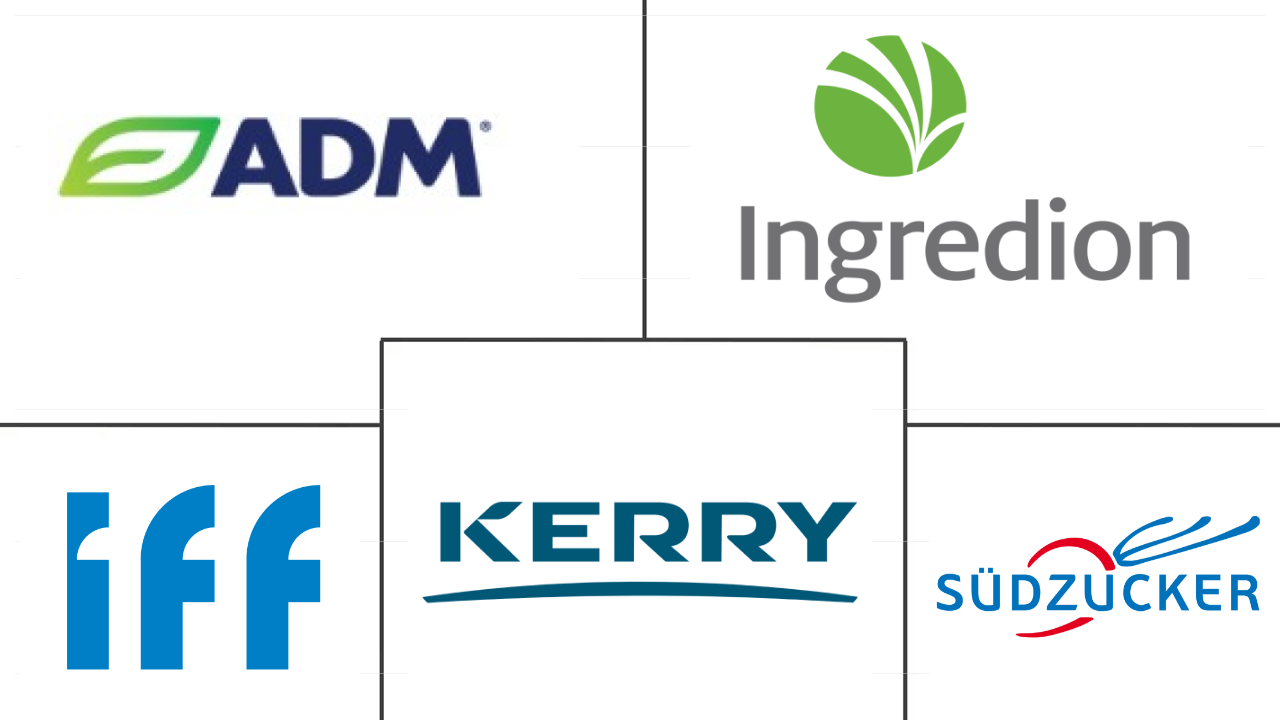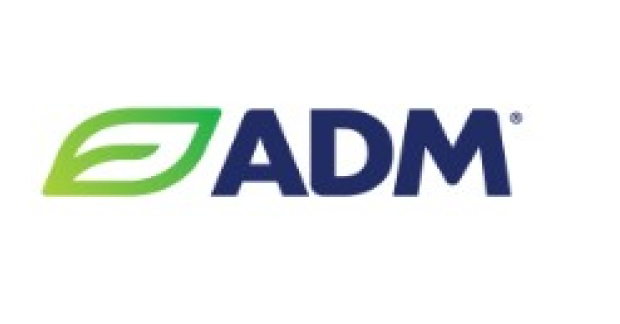Market Size of europe plant protein ingredients Industry
| Icons | Lable | Value |
|---|---|---|
|
|
Study Period | 2017 - 2029 |
|
|
Market Size (2024) | USD 3.45 Billion |
|
|
Market Size (2029) | USD 4.28 Billion |
|
|
Largest Share by End User | Food and Beverages |
|
|
CAGR (2024 - 2029) | 4.41 % |
|
|
Largest Share by Country | Russia |
|
|
Market Concentration | Low |
Major Players |
||

|
||
|
*Disclaimer: Major Players sorted in no particular order |
Europe Plant Protein Ingredients Market Analysis
The Europe Plant Protein Ingredients Market size is estimated at 3.45 billion USD in 2024, and is expected to reach 4.28 billion USD by 2029, growing at a CAGR of 4.41% during the forecast period (2024-2029).
3.45 Billion
Market Size in 2024 (USD)
4.28 Billion
Market Size in 2029 (USD)
4.26 %
CAGR (2017-2023)
4.41 %
CAGR (2024-2029)
Largest Market by Product Type
65.52 %
value share, Soy Protein, 2023
Soy protein overpowers all the plant protein types, owing to its high protein content, low viscosity, solubility, etc., catering to its extensive application in all sectors.
Largest Market by End User
52.40 %
value share, Food and Beverages, 2023
The F&B sector dominates the market, primarily led by meat and dairy alternatives due to their functionalities, making them a highly preferred ingredient in these industries.
Largest Market by Product Type
9.21 %
Projected CAGR, Pea Protein, 2024-2029
Pea proteins are gaining high demand from meat alternatives as they provide quick rehydration, neutral taste, and texturizing properties, leading to numerous product launches.
Fastest growing Market by End User
7.12 %
Projected CAGR, Supplements, 2024-2029
The rising consumer focus on health and sports fitness is anticipated to drive the segment. Among all, the preference for soy in the sector is propelling segmental growth.
Leading Market Player
17.32 %
market share, Archer Daniels Midland Company, 2021

Archer Daniels Midland Company's leading position can be attributed to its high-quality offering, followed by being one of the most active market players in the market.
Rising awareness of health risks associated with consuming meat and the expanding availability of plant-based protein substitutes is driving the market for food and beverages sector in Europe
- The food and beverage segment is leading the end-user market for plant protein in Europe. The food and beverage segment was driven by the meat/poultry/seafood and meat alternative products sub-segment, which recorded a CAGR of 4.13% in terms of volume during the review period. The growth in sales is linked to the rising awareness of health risks associated with consuming meat and the expanding availability of plant-based protein substitutes in most distribution centers across Europe.
- The demand for plant protein is primarily driven by the rising knowledge about its functionalities and growing awareness about diets that are rich in plant protein. In 2022, the meat/poultry/seafood and meat alternative products sub-segment occupied the major volume of the market, followed by the dairy and dairy alternative products sub-segment. The meat and meat substitutes sub-segment is projected to register a CAGR of 3.71% in terms of volume during the forecast period.
- The supplements segment, led by the sports and performance nutrition sub-segment, is projected to record the fastest CAGR of 6.72% in terms of value during the forecast period. The growing popularity of body-building and muscle-shaping and the rising awareness of the health advantages of plant protein have boosted the protein industry. It has also been claimed that the fitness benefits of whey protein can be replicated by supplementing it with higher dosages of plant protein (40 g/day or more). For people who want to shift their protein consumption to plant-based sources, it is now simpler to adorn these dietary patterns as key players are innovating on the basis of the sensory profiles of their products to make plant proteins as acceptable as possible.
The demand for plant-based protein supported by high income population, has resulted in an increased market of plant protein ingredients in Russia
- Russia remained the largest plant protein-consuming country in the region as the market is majorly F&B-oriented. In 2021, around 10% of Russians were already eating plant-based alternatives, and 54% were willing to include plant-based food in their diet. The demand for plant-based protein was mainly from Russians with high incomes. Russia's annual household income per capita was USD 6,523 in 2021. Environmental and ethical concerns are still the most unpopular topics among Russian consumers. However, the difference in the significantly increased positive perception of the "plant-based" label has largely been attributed to the market's growth.
- The Netherlands and Belgium held a minor volume and value share in 2022. They managed to gain sales mainly from the food and beverages and animal feed sectors. In 2020, the Netherlands had more than 60 companies and research institutions focused on plant-based protein. Lately, plant-based protein has become more popular in grocery stores and appears on menus at fast-food restaurants across the country. In 2022, soy protein dominated consumption in the country with a value share of 36%.
- France is anticipated to be one of the fastest-growing countries by registering a CAGR of 5.17% during the forecast period. Many firms, like ADM, Cargill, and Roquette, invested in plant-based proteins in France to achieve higher profit margins, which helped them cushion the impact of commodity prices and trade wars. Most plant protein used in animal feed is imported, including soy from the United States and Brazil. In 2021, France imported soy valued at USD 5.8 from the United States. However, the country aims to increase domestic production for feed and human nutrition, thus boosting agri-food sovereignty and sustainability.
Europe Plant Protein Ingredients Industry Segmentation
Hemp Protein, Pea Protein, Potato Protein, Rice Protein, Soy Protein, Wheat Protein are covered as segments by Protein Type. Animal Feed, Food and Beverages, Personal Care and Cosmetics, Supplements are covered as segments by End User. Belgium, France, Germany, Italy, Netherlands, Russia, Spain, Turkey, United Kingdom are covered as segments by Country.
- The food and beverage segment is leading the end-user market for plant protein in Europe. The food and beverage segment was driven by the meat/poultry/seafood and meat alternative products sub-segment, which recorded a CAGR of 4.13% in terms of volume during the review period. The growth in sales is linked to the rising awareness of health risks associated with consuming meat and the expanding availability of plant-based protein substitutes in most distribution centers across Europe.
- The demand for plant protein is primarily driven by the rising knowledge about its functionalities and growing awareness about diets that are rich in plant protein. In 2022, the meat/poultry/seafood and meat alternative products sub-segment occupied the major volume of the market, followed by the dairy and dairy alternative products sub-segment. The meat and meat substitutes sub-segment is projected to register a CAGR of 3.71% in terms of volume during the forecast period.
- The supplements segment, led by the sports and performance nutrition sub-segment, is projected to record the fastest CAGR of 6.72% in terms of value during the forecast period. The growing popularity of body-building and muscle-shaping and the rising awareness of the health advantages of plant protein have boosted the protein industry. It has also been claimed that the fitness benefits of whey protein can be replicated by supplementing it with higher dosages of plant protein (40 g/day or more). For people who want to shift their protein consumption to plant-based sources, it is now simpler to adorn these dietary patterns as key players are innovating on the basis of the sensory profiles of their products to make plant proteins as acceptable as possible.
| Protein Type | |
| Hemp Protein | |
| Pea Protein | |
| Potato Protein | |
| Rice Protein | |
| Soy Protein | |
| Wheat Protein | |
| Other Plant Protein |
| End User | |||||||||||||
| Animal Feed | |||||||||||||
| |||||||||||||
| Personal Care and Cosmetics | |||||||||||||
|
| Country | |
| Belgium | |
| France | |
| Germany | |
| Italy | |
| Netherlands | |
| Russia | |
| Spain | |
| Turkey | |
| United Kingdom | |
| Rest of Europe |
Europe Plant Protein Ingredients Market Size Summary
The Europe Plant Protein Ingredients Market is experiencing significant growth, driven by increasing consumer awareness of the health benefits associated with plant-based diets and the expanding availability of plant protein substitutes. The food and beverage sector, particularly the meat and meat alternative products sub-segment, is at the forefront of this market expansion. This growth is further supported by the rising popularity of vegan diets and the functional efficiency of plant proteins, which are being increasingly utilized in a variety of processed foods. Key players in the market are innovating to enhance the sensory profiles of plant-based products, making them more appealing to consumers. The market is characterized by a diverse range of applications, including supplements for sports and performance nutrition, which are projected to grow rapidly in value.
Russia stands out as the largest consumer of plant protein in Europe, with a significant portion of its population showing interest in plant-based alternatives. Other countries like the Netherlands, Belgium, and France are also contributing to the market's growth, with France anticipated to be one of the fastest-growing markets due to substantial investments by major firms in plant-based proteins. The market is fragmented, with several key players holding a significant share. Despite challenges such as a lack of innovation and public policy restrictions, the market continues to expand, supported by strategic initiatives and investments aimed at boosting the production and availability of plant protein sources across the region.
Europe Plant Protein Ingredients Market Size - Table of Contents
-
1. MARKET SEGMENTATION (includes market size in Value in USD and Volume, Forecasts up to 2029 and analysis of growth prospects)
-
1.1 Protein Type
-
1.1.1 Hemp Protein
-
1.1.2 Pea Protein
-
1.1.3 Potato Protein
-
1.1.4 Rice Protein
-
1.1.5 Soy Protein
-
1.1.6 Wheat Protein
-
1.1.7 Other Plant Protein
-
-
1.2 End User
-
1.2.1 Animal Feed
-
1.2.2 Food and Beverages
-
1.2.2.1 By Sub End User
-
1.2.2.1.1 Bakery
-
1.2.2.1.2 Beverages
-
1.2.2.1.3 Breakfast Cereals
-
1.2.2.1.4 Condiments/Sauces
-
1.2.2.1.5 Confectionery
-
1.2.2.1.6 Dairy and Dairy Alternative Products
-
1.2.2.1.7 Meat/Poultry/Seafood and Meat Alternative Products
-
1.2.2.1.8 RTE/RTC Food Products
-
1.2.2.1.9 Snacks
-
-
-
1.2.3 Personal Care and Cosmetics
-
1.2.4 Supplements
-
1.2.4.1 By Sub End User
-
1.2.4.1.1 Baby Food and Infant Formula
-
1.2.4.1.2 Elderly Nutrition and Medical Nutrition
-
1.2.4.1.3 Sport/Performance Nutrition
-
-
-
-
1.3 Country
-
1.3.1 Belgium
-
1.3.2 France
-
1.3.3 Germany
-
1.3.4 Italy
-
1.3.5 Netherlands
-
1.3.6 Russia
-
1.3.7 Spain
-
1.3.8 Turkey
-
1.3.9 United Kingdom
-
1.3.10 Rest of Europe
-
-
Europe Plant Protein Ingredients Market Size FAQs
How big is the Europe Plant Protein Ingredients Market?
The Europe Plant Protein Ingredients Market size is expected to reach USD 3.45 billion in 2024 and grow at a CAGR of 4.41% to reach USD 4.28 billion by 2029.
What is the current Europe Plant Protein Ingredients Market size?
In 2024, the Europe Plant Protein Ingredients Market size is expected to reach USD 3.45 billion.

